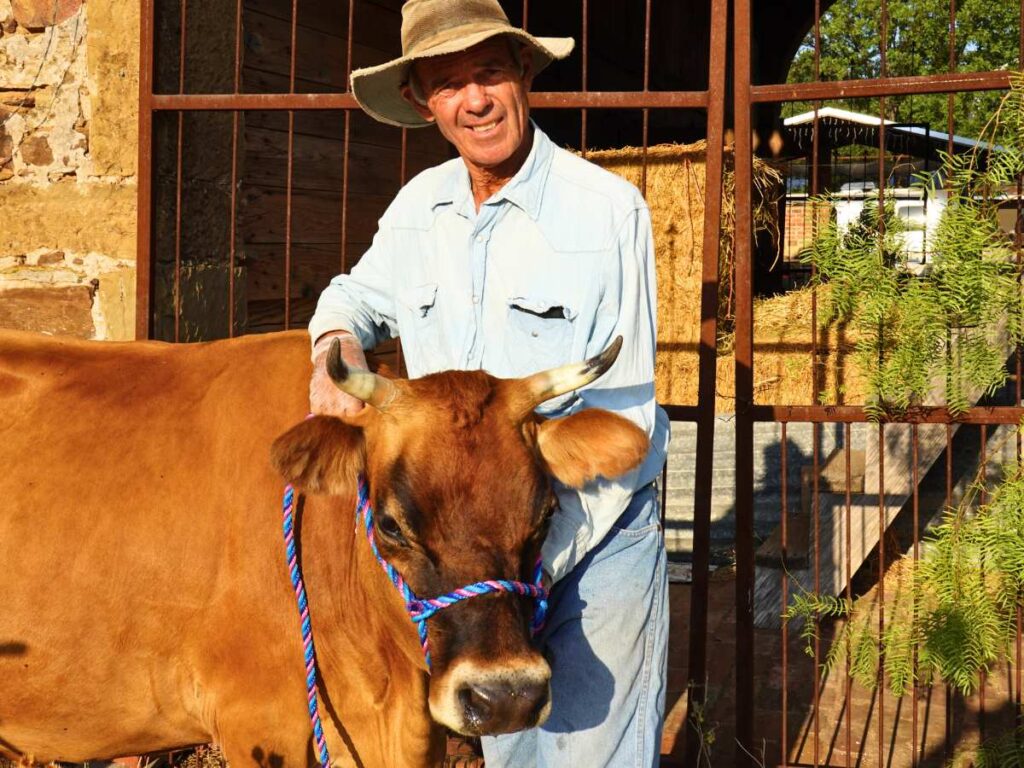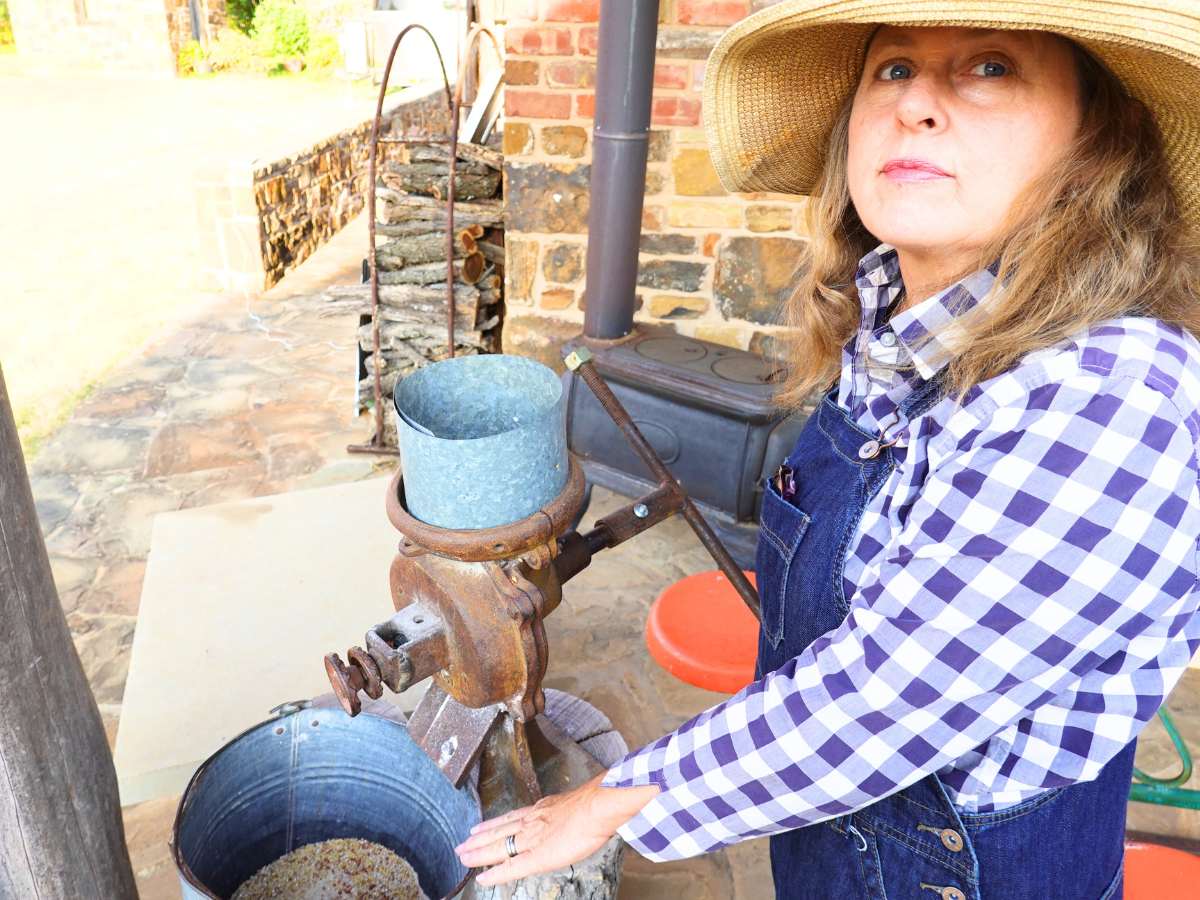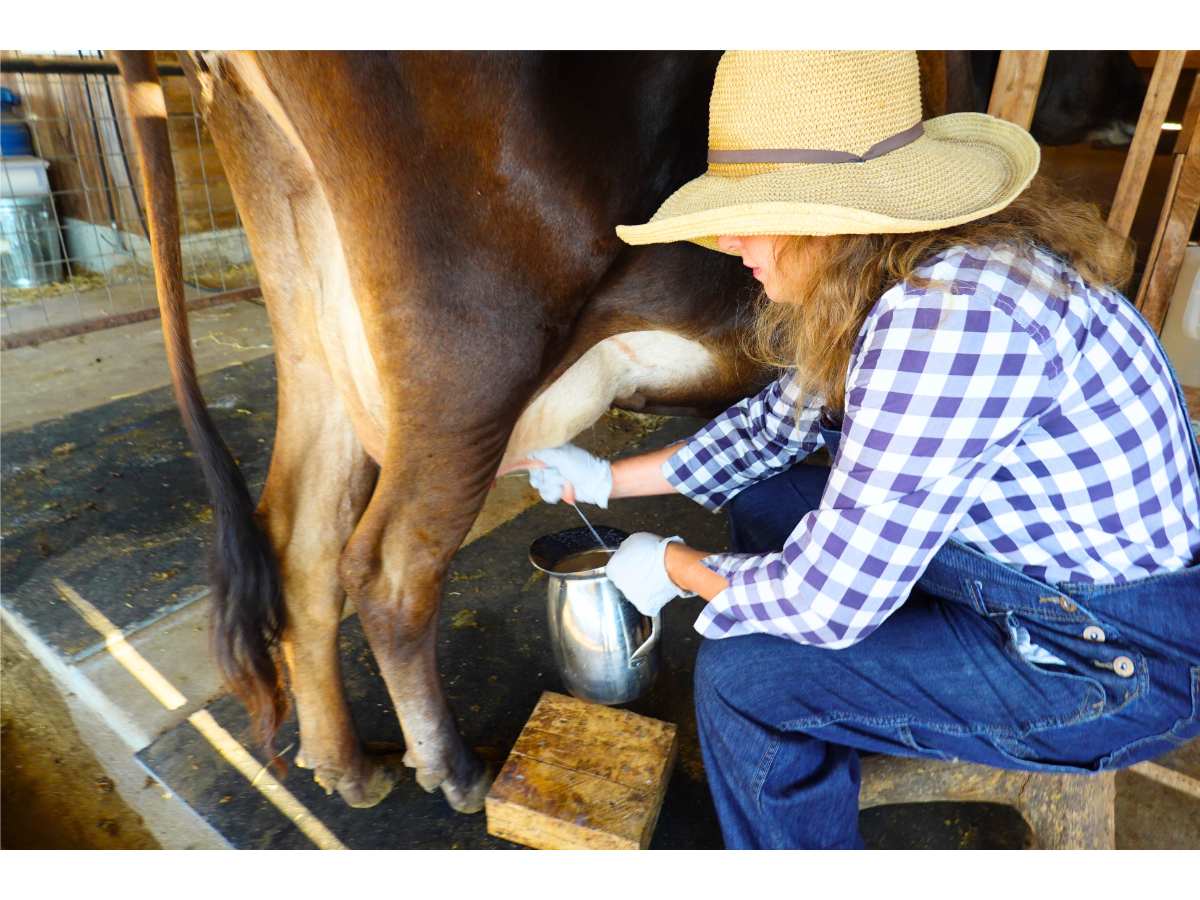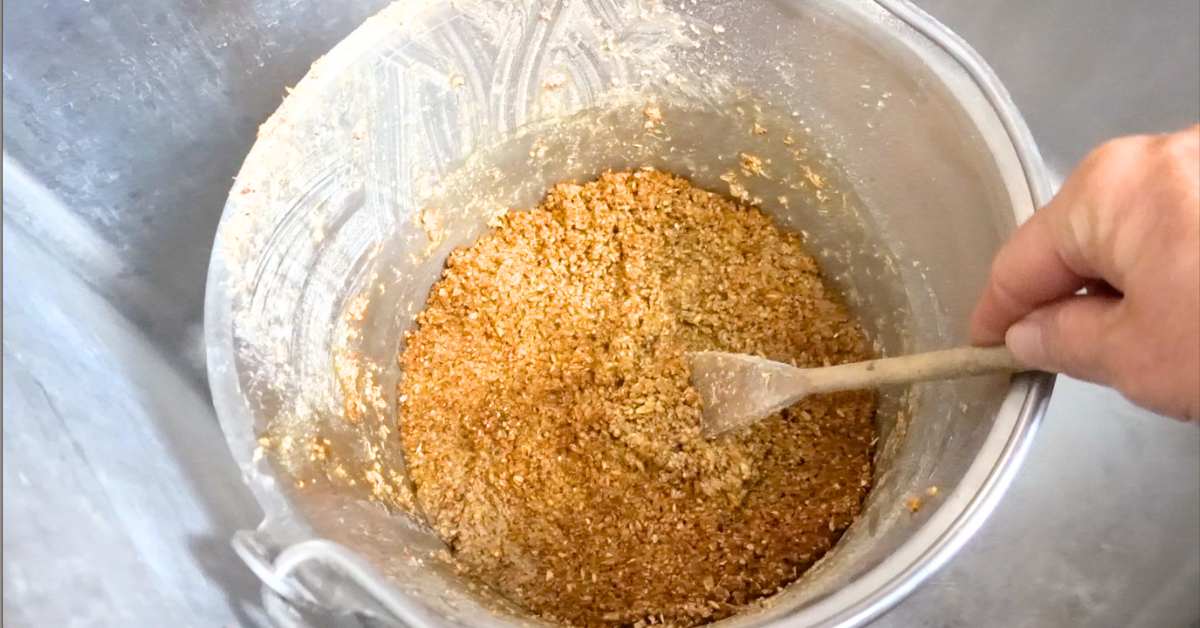Feeding your family milk cow is the most important thing you need to know when adding a family milk cow to your homestead. This post will help simplify the process and I will share my tips from owning a family milk cow for over 20 years.

Jersey Family Milk Cow with Mr. Rueffer
To preface this post I want to share that feeding your family milk cow in your specific geographic location may look very different from how we feed our family milk cows. It is important to take note that our geographic location and genetics play a large role in how we feed our family milk cows. In this blog post I will share our current strategy for feeding our herd of Jersey milk cows. First of all going back 15 years, we introduced dairy grass-fed genetics from Holt Creek Jerseys. At the present time our herd has transitioned from a modern conventional style of jersey seen at dairies to grass-based dairy cows that thrive in the semi-arid Texas Hill Country.
Important advice
It is important for you to work out your own feed program for your cow. Those of us who have had dairy cows a long time can give you good advice but we don’t live where you live. We all have different rainfall amounts and inputs available. Plus all cows are different and their genetics play a major role in how you feed them. I am going to discuss with you important points and some tips that will help you navigate feeding your family milk cow. Remember I am not a doctor so please consult your veterinarian for nutritional advice.
Another very important point I want you to remember is you must always be evaluating your cow’s diet on a daily basis so if you must intervene, earlier is better rather than later.
I would like for you to watch this important video about how to score body condition of dairy cows produced by Penn State. This is a valuable tool for you to refer to.
This is extremely important!
Mr. Rueffer and I want to help guide you in the best manner we know how, so you can avoid all the mistakes we have made over the years. I don’t hear many others talking about this but this is a gigantic topic! What I am talking about is bovine health and disease. The numbers are extremely concerning of the high percentage of dairy cows that carry zoonotic disease. Back in the beginning we had a veterinarian that educated us about the important diseases you need to be aware of before bringing a cow on your land and feeding your family raw milk. Please understand that I completely attribute my family’s good health to consuming raw milk. However we are extremely cautious of biosecurity on our farm. Please watch our video to learn about the health of your family milk cow.
Please Read Our Blog Post About Your Family Milk Cow’s Health:
Three topics that we will discuss about feeding your family milk cow:
- 5 things to consider when planning your cow’s diet.
- How we are currently feeding our dairy cows.
- I will share some strategies to help you have more options in feeding your family cow.
We raise old-fashioned grass-fed jersey dairy cows. For the last 15 years we have used grass-fed genetics to improve our herd. They are old- fashioned style jerseys, not the kind of cow you will see at conventional dairies.
They are low input cows. So keep in mind we have grass-fed genetics and value regenerative agriculture.
Our farm is located in a semi-arid climate with periods of extreme drought in the last 5 years.
At the moment we are in drought with a record number of consecutive high temperature days. It is late summer and fall is around the corner. Grazing is anything but perfect.
I am very committed to the grass-fed movement, but if there is no rain in your area and your farm is grass based, then you must make a new plan.
Remember when you see a farmer that is completely grass based they are educated and trained on how to do this effectively. As well as having improved grass-fed genetics, I attended a Holistic Management International program and learned how to manage grazing along with many tools to help me in my farming and ranching journey. I highly recommend investing in education.

Old-Fashioned Grain Mill useful to mill grain for Feeding Your Family Milk Cow
Here are 5 things to consider when planning how to feed your family milk cow
1. You must consider your geographic location. What is your rainfall amount? Are you in an arid, semi-arid climate? Weather? Drought? Flooding? Snow?
2. Is your soil and grasses nutrient-dense with minerals and trace minerals required by a dairy cow? In our area we have little rainfall and short grass but it is super nutrient-dense and the cows don’t need as much to satisfy their nutritional requirements. Note: Where the cow was born and grew up can affect her rumen capacity. Sometimes moving a cow from an arid climate to a high rainfall area may have some consequences. Ask your veterinarian about this. Our county has a special mineral mix for cattle.
3.Will your cow have access to pasture or be in a confined area? Will she depend on all inputs coming from you? If your cow has good grazing and you only need to supplement, then that looks different than complete feeding.
Your family dairy cows can self-medicate through grazing. We allow diversity in our plant species offered in our pastures. Remember your family cow’s calf will learn this from her so always keep this in mind.
4. What feed sources are available to you? Do you have high quality hay and feed available? In our area we do not have access to high quality hay. We don’t buy hay with any kind of spraying such as for grass burrs. So we are very limited. There is no farming in our area so we are dependent on having organic alfalfa pellets shipped in. Very expensive. We have Azure Standard available for grain. They also sell a dairy ration if you want the guess work done for you.
5. Genetics- This is so important and something I was not aware of in the beginning. If you have a conventional modern dairy cow that has only had a grain based diet, then most likely that is the diet you will need to feed her. At least until you get things figured out.
This kind of cow puts everything into her milk and body condition is secondary. It will take more inputs to keep her in good body condition. She will have lots of milk though.
Remember it is normal for all dairy cows to lose body condition when they are at peak production between 2-3 months. During this period of time it is a good idea to score her body condition.
Our jerseys produce a moderate amount of milk while maintaining body condition well and they also require a less complicated diet. If there is grass she will do great spring through fall in my area with little or no inputs while lactating.
Sometimes grass-fed works for us, but when it does not rain at all we must have a new plan and that is ok. The important thing is that your cow is healthy and producing healthy milk.

Milking a Jersey cow
Our current feeding strategy
- At the present how are we feeding our cows is because of extreme drought and fall is around the corner. What we desire and what has happened in the past, is the cows graze all summer and are in very good condition going into winter. But that is not what we have right now. Right now there is standing dry grass so they are going out to graze, but we have had to supplement with alfalfa and hay. I am watching daily their milk production and body condition because they are nursing large calves.
- Cows usually eat about 30 pounds of hay a day so we are planning for this as we prepare for winter.
- If the cow is not maintaining condition we will give her 1/2 % of her body weight of soaked grain. This doesn’t sound like much but if you feed it every day it will make a big difference.
- The feed ration is half milo and half barley. We grind the grains then soak the mixture in apple cider vinegar, molasses and water. We usually soak it half a day. I like to feed this in the evening.
- The cows are offered a dairy mineral, Redmond salt and a local mineral specific to our county as well.
- If organic kelp is available we will add a tablespoon to the feed ration but only in the winter.
- She is offered pure non-chlorinated water all the time.
- It is important to keep your cow in good condition because if she falls behind it is hard to catch her up especially in winter when she is lactating.Take a few minutes daily to observe your cow.

Fermented Grain to Feed to Dairy Cows
Additional Options to help you keep your family milk cow healthy
- We sprout sunflower seeds
- Of course you can give her more grain but do research to be fully informed about giving ruminants grain. Buying a formulated dairy ration may be a good idea. We have used this one in the past.
- We will wean the calf a little early but not earlier than 6 months, instead of waiting until our usual 8 months old. This will help her regain body condition before winter.
- We dry up our cows before winter. We calve in the spring. We give them a longer dry period.
- Last year we planted triticale for winter grazing and it worked very well. We plan to do this again. Managed grazing works wonderfully. We leave pasture to grow for at least half a year to save forages, therefore in time of no rain we have something to fall back upon. We have a wheat farm where winter grazing cattle works well with few inputs.
- In the winter sometimes we offer a Redmond salt brine.
- If you want to know more information about feeding your cow get the book “Keeping the Family Cow”
Your family milk cow will bring an abundance to your farm and much joy! Remember not only does she require nutrition but a stress-free environment. We have seen tremendous results from stress management. I plan to share our management practices in the future, so stay in touch.
Happy cows make healthy milk!
Please share this information and our video with all your friends who have dairy cows.







